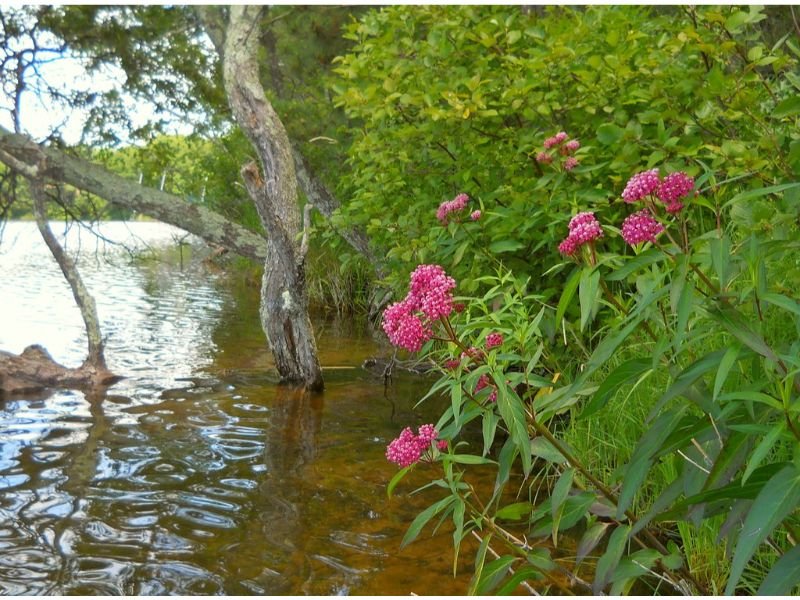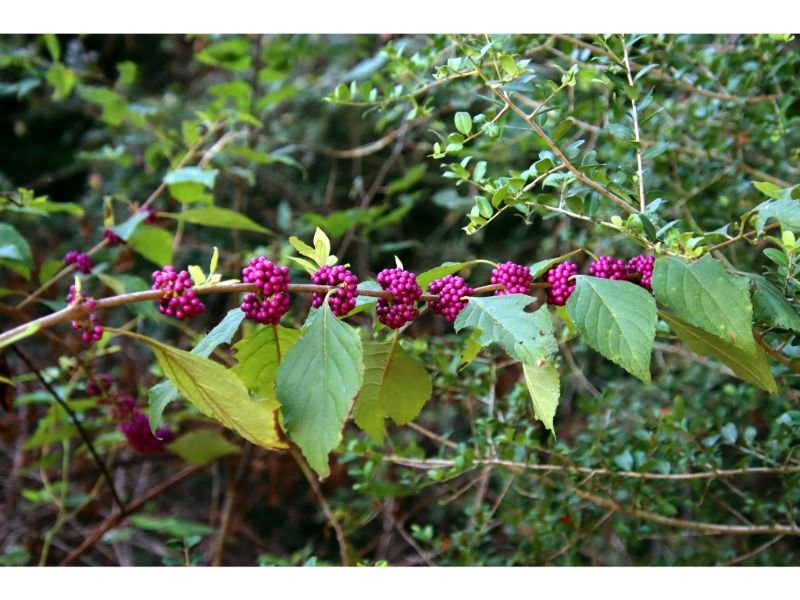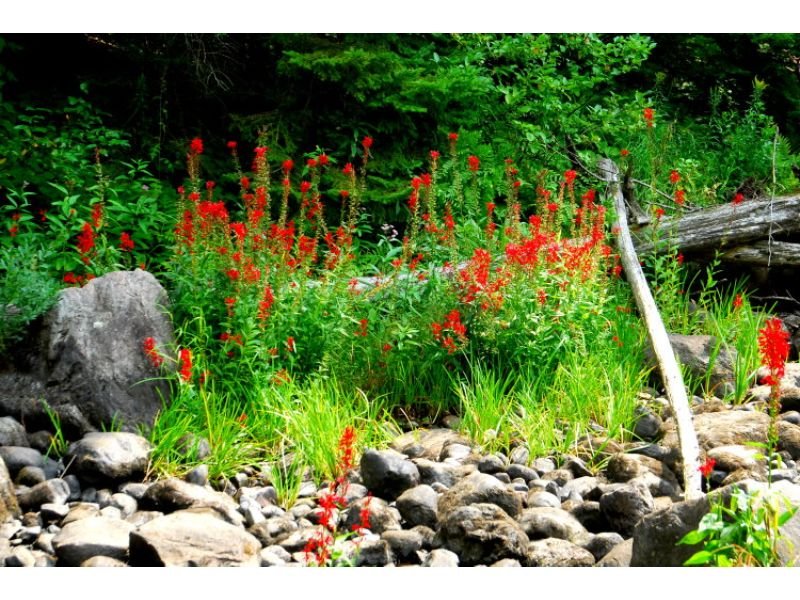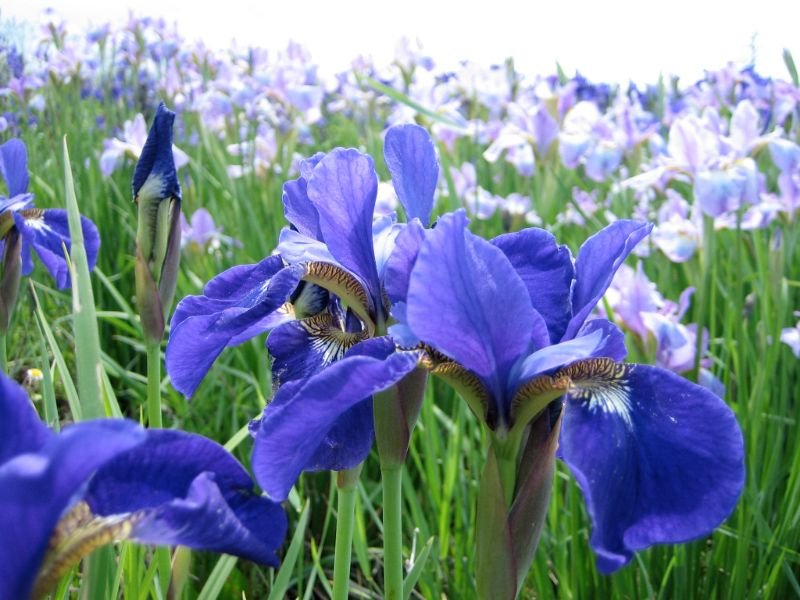The struggle of being a plant enthusiast that lives in shady and wet areas is real. This is because most plants need bright light and could not withstand being in constant dampness.

Luckily, we can’t say the same for these perennials that like wet soil and shade, as they have adapted to such challenging environments. Want to know what those botanical gems are? Let’s discover!
Table of Contents
Indoor Perennials for Wet Soil and Shade
Spider Lily (Hymenocallis)

Zones: 7 to 10
Size: 1 to 3 feet high and wide
Environmental Benefits: Prevent erosion, food sources for insects
The most striking parts of spider lilies are their blooms, which are characterized by spider-like elongated petals. Although being perennials that like wet soil and shade, spider lilies tolerates wouldn’t mind bathing under the full sun too. As native to subtropical and tropical regions, these flowering plants generally appreciate moderate to high humidity levels.
Calla Lily (Zantedeschia)

Zones: 8 to 11
Size: 1 to 2.5 feet high and wide
Environmental Benefits: Promote biodiversity, attract hummingbirds
Aside from wet but well-draining soil, calla lilies are also fans of fertile soil with a slightly acidic pH of 5.5 to 6.0. Unlike spider lilies, calla lilies must be living under the shade all the time. Gardeners should avoid these beauties from direct, intense sunlight, as it can scorch their delicate leaves. Ensure good air circulation to prevent root rot and fungal diseases, which they are susceptible to.
Spiderwort (Tradescantia x andersoniana)

Zones: 4 to 9
Size: 1.5 to 3 feet high and wide
Environmental Benefits: As floral resources and nectar-bearing plants
Spiderworts are low-maintenance plants that are not difficult to cultivate and pretty adaptable to various growing conditions. Moderate humidity along with moderate temperatures are what these perennials that like wet soil and shade favor the most. To promote healthy growth and blooming, plant lovers can apply slow-release fertilizers during spring.
Pollinator Attractor Perennials for Shady Wet Areas
Swamp Milkweed (Asclepias incarnata)

Zones: 4 to 9
Size: 3 to 5 feet high and 1 to 2 feet wide
Environmental Benefits: Provide ecological balance, home for various endangered butterfly species
As you can see through the plant’s name, the relationship between swamp milkweed and water is inseparable. In the wild, you can find this plant thriving healthily among marshes and along the edges of streams. Swamp milkweed is relatively free from pests and diseases. This plant also has been used in traditional medicine to treat ailments such as respiratory issues.
American Beautyberry (Callicarpa americana)

Zones: 7 to 11
Size: 3 to 6 feet high and 4 to 6 feet wide
Environmental Benefits: As a wildlife attraction, to prevent soil loss
American beautyberry shrubs feature broad, ovate foliage with serrated edges. These perennials that like wet soil and shade are best known for their berry fruits, which are glossy and come in shades of purple. As medium-sized shrubs, pruning is not generally necessary for American beautyberries. However, gardeners can prune these plants to remove any dead or damaged branches.
Halberd-leaf Hibiscus (Hibiscus laevis)

Zones: 4 to 9
Size: 3 to 6 feet high and 2 to 4 feet wide
Environmental Benefits: As forage plants, to prevent soil degradation
Plant enthusiasts who are looking for plants with massive and showy blooms shall try cultivating halberd-leaf hibiscus. These herbaceous perennials for wet soil and shade feature 4 to 6 inches blooms, ranging in shades of pink, white, or purple. When it comes to soil’s pH, Halberd-leaf hibiscus prefers slightly acidic to neutral, including sandy or loamy soil.
Cardinal Flower (Lobelia cardinalis)

Zones: 3 to 9
Size: 2 to 4 feet high and 1 to 2 feet wide
Environmental Benefits: Food resources primarily for small birds, prevent land degradation
Cardinal flowers are one of the most talked about in town, thanks to their striking red blooms. The foliage of cardinal flowers is also no-less attractive, coming in lance-shaped, toothed, and deep green; it added more splash of color to the plant’s overall appearance. Cardinal flowers thrive best in humus-rich soil with medium to high humidity.
Shade and Wet Clay Soil Loving Perennials
Arum Lily (Zantedeschia aethiopica)

Zones: 8 to 10
Size: 2 to 3 feet high and 1 to 2 feet wide
Environmental Benefits: Promote natural pollination and soil stabilization
As the name implies, arum lilies are stunning flowering perennials that like wet soil and shade from the Araceae family. Like most aroids, arum lilies are not frost tolerant and may need protection when grown in cooler regions. Gardeners need to note that arum lily has toxic compounds called calcium oxalate crystals that can cause irritation and a burning sensation when ingested.
Siberian Iris (Iris sibirica)

Zones: 3 to 8
Size: 2 to 4 feet high and 1 to 2 feet wide
Environmental Benefits: Prevent sedimentation, aid in water filtration by absorbing excess nutrients
In contrast with arum lilies, Siberian irises are cold-hardy and thrive in cooler climates. These perennials that like wet soil and shade tolerate various humidity levels, but gardeners must keep their soil moist and permeable. Siberian irises are generally cultivated for their aesthetic value and are a popular choice for water gardens and zen gardens. Ensure the soil has good drainage as they’re vulnerable to root rot.
Zephyr Lily (Zephyranthes candida)

Zones: 7 to 10
Size: 1 to 1.5 feet high and 0.5 to 1 feet wide
Environmental Benefits: Forage plants especially for insects, prevent soil runoff
Gardeners who are limited in space or are looking for container plants can opt for zephyr lilies. These native to South America flowering plants are suitable for indoor gardening, as they’re adaptable to a variety of humid conditions and grow anywhere in both partial or bright light environments. Zephyr lilies are perfect companions for other perennials that like wet soil and shade such as arum lilies.
Read Also:
- The Best Indoor Plant Grow Lights for Thriving Houseplants
- Gardening Books: Essential Reads for Green Thumbs
- DIY Garden Projects: Creative Planting Ideas
- The Ultimate Guide to Organic Fertilizers for Healthy Plant Growth
- Must-Have Garden Insecticide for Pest Control Solutions
Challenges of Growing Perennials in Wet Soil and Shade
Just like any other plants, growing perennials in shady areas where the soil is damp presents several challenges that gardeners need to address. Major issues such as poor drainage, which can lead to root rot, stunted growth due to limited access to sunlight, and competition from surrounding plants or shrubs for nutrients should be handled carefully.
So How To Beat These Problems?
To combat these issues, there are several ways gardeners can do. First, it’s crucial to improve soil drainage by incorporating organic matter or creating raised beds. Most importantly, always opt for perennials that like wet soil and shade, while ensuring each plant has similar cultivation needs. Gardeners also need to provide adequate spacing to alleviate the issue of overcrowded plants.
Wrapping Up
Damp areas with filtered lights can be a nightmare for most plants, but not for these perennials that like wet soil and shade. Flowering plants such as spider lilies, Siberian iris, and cardinal flowers, as shrubs like American beautyberries, are definitely worth considering for anyone who is looking to create a lush living scenery in this area.

New author in the hood. Loves gardening and flowers are my spirit animals (yes I know they are not animals but I insist). I will be covering most of the flowers’ topics here and occasionally random though as well.






